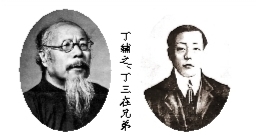
Ding Fuzhi and Ding Sanzai brothers
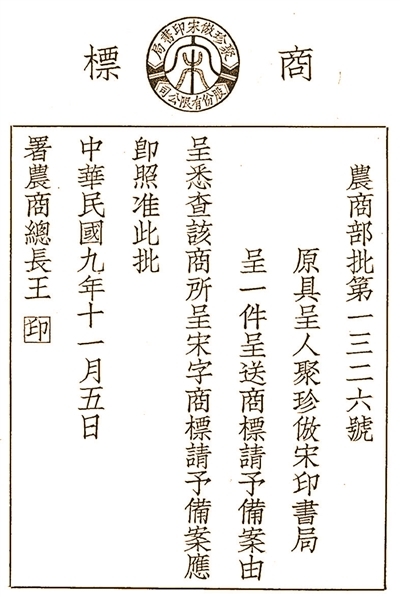
Juzhen imitation of the Song Dynasty Printing and Publishing House trademark approval document, 1920
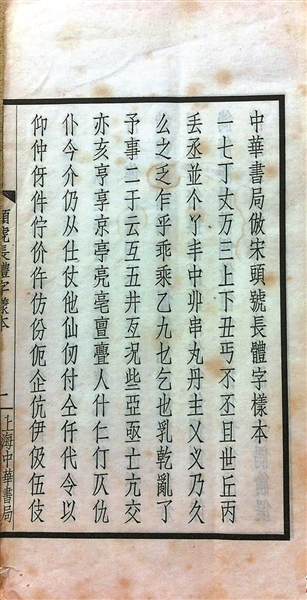
Zhonghua Book Company’s imitation of Song Dynasty number one character sample
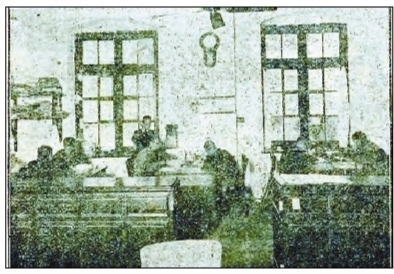
Gathering treasures to imitate old photos of the Song Dynasty Affairs Department
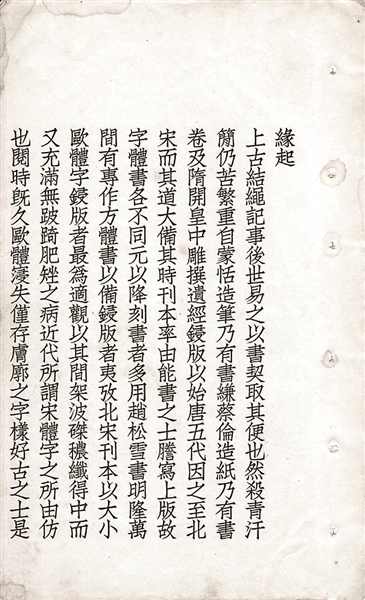
The Origin of the Creation of Juzhen Imitation Song Edition (Published by Ding Fuzhi in 1923)
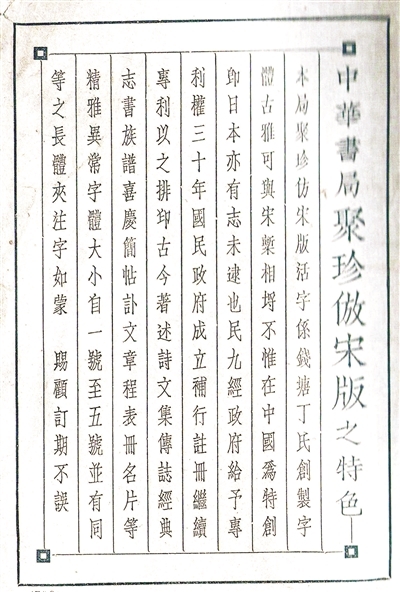
Zhonghua Book Company collects treasures and imitates Song Dynasty edition advertisements
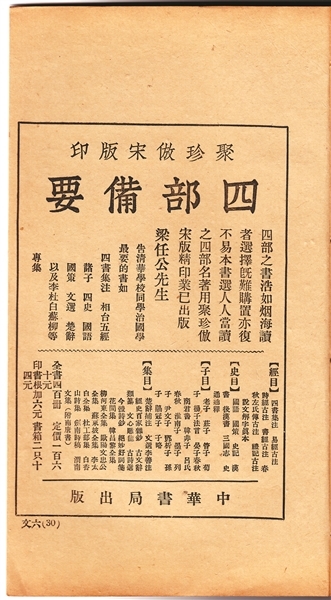
In 1924, Zhonghua Book Company printed an advertisement for the "Four Preparations" series with the "Collection of Treasures and Imitation of the Song Dynasty Edition"
Exactly one hundred years ago, in August 1920, Ding Fuzhi (1879-1949, also known as Ding Ren), who had just passed the age of "No Confusion", received a government approval letter and became the first person in Chinese history to be approved. Nationally recognized font inventors and users with independent intellectual property rights.
Ministry of Internal Affairs Approval No. 635
The original was submitted by Ding Ren, manager of Juzhen Imitation Song Dynasty Printing Bookstore, and presented an imitation Song European style font and sample. Please register for the photo. It is said that the Song Dynasty edition books were widely collected, the fonts were copied accurately, and people were hired to imitate the lead movable type. , refined copper molds, mold-cast lead characters, imitating the format of the Song Dynasty edition, arranged in books, now the total number of cast characters is No. 1, No. 2, No. 4 and No. 2, No. 3 long-body characters with European-style Song characters inscribed, a total of five kinds; Copy samples were created one after another, including No. 1, No. 1, No. 3, No. 5, and No. 1, No. 4 long-style fonts with annotations, etc. They also created long and short fonts and Xixia fonts. There are a total of eight types of characters that have not yet been made, and they can be issued in batches as soon as they are all made. We will wait for the opportunity and collect five samples of the first-class steel molds and lead typefaces as well as imitation Song Dynasty European fonts, and collect two imitation Song style layout samples. The registration fee is five yuan to the department. If it is consistent with Article 7 and Article 13 of the Copyright Law, registration should be allowed. After the license is issued, the renewal certificate should still be submitted in time for filing, the joint approval license should be issued, and the batch should be issued at the same time.
August 26, 9th year of the Republic of China Zhang (printed), Director-General of the Department of Internal Affairs
The font invented by Ding established a channel between classical Chinese calligraphy and the modern printing industry, and also provided a mass manufacturing standard for Chinese people who pursue retro fashion. Ding's invention of "Imitation Song European calligraphy" and "Collection Imitation Song Edition" enabled the printing of traditional Chinese books (especially woodblock-engraved books) to begin to get rid of its reliance on pure handwork and no longer rely solely on the writer of the original plate. It can become a standardized and large-scale industrial model based on the preferences and personalities of engraving craftsmen, book engraving investors, and investors.
Compiling and printing a collection of poems for their late father, the Ding brothers created the "Collected Treasures Imitation Song Edition"
In 1919, Ding Licheng's "Xiaohuaiyan Yin Manuscript" was published. Ding is not an "ancient person" from the Ming and Qing dynasties, but just a scholar in the late Qing Dynasty. Ding died of illness just after the founding of the Republic of China; "Xiaohuaiyan Yin Manuscript" is a collection of poems published by his two sons (brothers Ding Fuzhi and Ding Sanzai) in memory of their late father.
The main text of this collection of poems is printed in size 3 square fonts. Although the shape is square and solemn, it is not the "Song font" with thin horizontal lines and thick vertical lines that is common on the market. Instead, the horizontal and vertical strokes are evenly structured and full of clarity and strength. The meaning of regular script.
The Ding brothers began planning to compile and print a collection of poems for their late father in 1911, but they always felt that the square "Song style" that was popular at the time was too solemn but not elegant enough. Such a rigid and clumsy font should not be used to print a collection of poems. However, at that time, there was no such "ideal font" that could be found or readily available that met its standards; those commonly available on the market were all inherited, applied, or partially modified from the standard fonts for official engravings of the Qing Dynasty, and they were all thin and horizontal. The vertical and thick square "Song Ti" characters are all patterned without exception. The kind that the Ding brothers wanted was an elegant font that exuded the graceful and smooth regular script style and slightly connected the momentum. Disappointed, the two brothers, who had read classics since childhood and were proficient in calligraphy and seal carving, became creative and decided to carve a set of calligraphy patterns that suited their own needs.
The Ding brothers decided to collect Song edition books, imitate them themselves, engrave them with movable type, and then make impositions for printing. The original plan was to use boxwood to engrave characters (a batch of them were tried), but the labor cost was too high, so they decided to use boxwood as lead. They went to Shanghai to hire two famous engravers at the time, Xu Xixiang and Zhu Yibao, to jointly engrave lead type and refine it. Bronze mold, mold cast lead type.
By 1916, the Ding brothers had processed and designed the regular script, which was a uniformly modified font that imitated Ouyang Xun's calligraphy style. Since the prototypes of the fonts were all from Song edition books, they were about to make it. One font is named "Fake Song European Style".
This type of font that the Ding brothers were so fond of and worked hard to create appeared far earlier than the "Song style" which had been solidified into square symbols in the Ming and Qing dynasties. Its morphological foundation is still regular script. The formation time was earlier than the "European style" of the Song Dynasty.
The so-called "European style" refers to the font written by its founder Ouyang Xun. If the emergence of this font is divided according to time, it should be called "Early Tang style", but it is definitely not "Song style", and it seems that it is not. It should be named "Fake Song Dynasty". It is only because of this kind of "European style" that it was copied and finalized by booksellers and printers in the Song Dynasty. It was widely used in stereotyped printing and became the "standard" font for books printed in the Song Dynasty.
A hundred years ago, the Ding brothers rectified the name of "European style" and clearly called the font they created "imitation Song European style". At the same time, the movable type printing format that uses this font as the core technology to imitate the Song Dynasty printing format was named "Juzhen imitation Song Dynasty printing style". This newly invented layout and the "imitation Song and European characters" jointly applied for a national patent.
The so-called "Juzhen" means movable type printing, which began during the Qianlong period of the Qing Dynasty. Emperor Qianlong also thought that the word "movable type" was not elegant, so he replaced it with the word "Juzhen", which means gathering characters to imprint rare copies. For the Ding brothers, the prefix "Collect Treasures", in addition to following the traditional saying and adding some embellishments, may be used to describe the fact that the Ding brothers gathered Song type font samples for many years and carefully cast them for many years to achieve precious fonts. .
It should be noted that before the "Imitation of Song Dynasty European Style" and "Juzhen Imitation of Song Dynasty" patents were applied for, one of the Ding brothers, Ding San, unfortunately died young in 1917. His brother Ding Fuzhi devoted himself to continuing the unfinished business of the brothers' cooperation.
When the Commercial Press wanted to cooperate with it but felt that the word "Collect Treasures" was too cumbersome and did not want to be marked in the book, it was flatly rejected by Ding Fuzhi. Soon, Ding Fuzhi founded the "Juzhen Imitation Song Dynasty Seal Bookstore", which became famous throughout the country. Although it was later acquired by Zhonghua Book Company, Ding still held the position of technical director, and the patented name of "Juzhen Imitation Song Edition" was always clearly marked on the center and pages of the printed books.
It can be said that the word "Juzhen", ever since it was used in the patent name by Ding Fuzhi, has always been as important as the word "imitate Song Dynasty". The word "Collect Treasures" contains a unique emotional sustenance of the patented fonts and layouts jointly created by the Ding brothers.
"Collecting treasures and imitating the Song Dynasty version" can be said to preserve the essence of the country
Shanghai's "Republic of China Daily" published an unsigned article on October 30, 1916, titled "The Painful Efforts to Preserve the Essence of China." This article may be the earliest extant article in China describing the creation of the "Collection of Treasures and Imitation Song Edition".
The painstaking efforts to preserve the essence of the nation
Ding Zhuzhou and Song Sheng, two gentlemen from Hangzhou, had a rich family and collected books. Their sons and grandsons all had strong classics and soft histories, and they studied daily affairs. The person whose name is San'e and who is illiterate is a master of Nanshe society. He is especially good at the study of catalogues. He often thinks that the Song and Yuan editions are getting rarer and is suitable for collecting treasures. Last winter, I occasionally visited Wangjiagang Town in Pudong. I liked the quietness of the place. I rented the house of the Cheng family and the Tang family, and recruited calligraphers, carpenters, and engravers. It was named "Juzhen Imitation Song Seal Publishing House". It has recently moved to Lane 6, Junyi Lane, Shanghai Meijie North Railway Station. It will prepare bronze molds, cast type, and typesetting into books. It will be a brilliant start in the printing industry. After hearing about this move, Mr. Miao Xiaoshan and Zhang Taiyan highly praised it. It is a pity that it has not raised any shares, resulting in financial constraints, and it is not possible to seek quick success. Alas, there is actually a need to preserve the national essence, but no domestic capitalist has come forward to advocate it. If you don't know it, you really have a heart. His self-written origin says:
Medieval deeds were made with complicated procedures and simple functions. They were carved on bamboo as records, and the slips were preserved in gold, which was inconvenient. Since Meng Tian made pens, there were many books on them; Cai Lun made paper, and there were scrolls. Then he followed the emperor's reign, carved and compiled the sutras, and began to engrave them. The Tang and Five Dynasties followed it, and by the Northern Song Dynasty, it was well prepared. The current version of the journal was written by a man who could calligraphy, so the fonts were different. After the Yuan Dynasty, Zhao Songxue's calligraphy became popular, and calligraphers often used it. At the end of the Ming Dynasty, there were calligraphers specializing in square-style calligraphy to prepare the inscriptions, which is where the popular "Song-style" calligraphy came from. Yi, if you look at the Northern Song Dynasty editions with large and small European characters, they are the most pleasing to the eye. With the frames, ripples, and grain weaving in between, it is both middle and full, and there is no lameness or dependence on the fat grain. The origin of "Song style characters" is imitation. However, after reading it for a long time, the European style was lost, and it became the word "Skin Profile" today. Those who love the past are those who advocate the European Song style calligraphy, which is not an attempt to correct the past, but actually opposes the past.
In the early Qing Dynasty, the rule of Youwen captured the hearts of a generation. The Wuyingdian School published a large number of ancient and modern books, and the collected editions were created in response to the times. This was the era of the rise of movable type printing. The printing of books with movable type had already been done in the Song Dynasty, and it was cheaper than printing with movable type. So there were various types of clay characters, tile characters, tin characters, copper characters, and wooden characters. However, the number of wooden characters printed on Wuyingdian's works exceeds 250,000, which cannot be said to be unprecedented movable characters. In the Qing Dynasty, when the sea ban was lifted and the Western methods of movable lead type and machine printing were imported, a set of Chinese characters was produced by the Hong Kong Church, which was specially used for printing church books. It was called "Hong Kong characters" at that time. Its sense of proportion is like today's "No. 4 character". Japan promoted it and made seven types of large and small typefaces for printing in China. They called them "Ming Dynasty characters" and people took advantage of them. The business of printing books with movable type was very prosperous. Today, those who claim to be able to make their own movable type in order to meet the demand for printed books are specially made from the characters imported from Japan. They are not considered to be able to write and engrave characters. Therefore, the font is limited to the "Song Ti" type of characters.
The reason why my husband's version is more valuable than that of the Northern Song Dynasty is not just because it is ancient. Its font is strict and its printing is excellent, making it the best among all kinds of publications. In view of this, San'e made European Song style movable type, carved wood molds with wax, cast bronze with lead, and went through various procedures to form seven types of square characters, three types of long characters, and three types of flat characters, in order to adapt to the ancient times. What the person needs. I don't dare to say that because of the creation, I want to shine, and I have prepared a special format in the book printing world so that the book printers can choose it.
Among the nearly 1,000-word introduction mentioned above, more than 700 words are excerpted from "The Origin of Juzhen Imitation Song Version" written by Ding Sanzai. This article was later compiled into the brochure "Various Samples of Juzhen Imitation Song Version" printed by Ding Fuzhi. It is the most conclusive and direct historical document of the patent creation process of the Ding brothers.
After that, the title of "Collection of Imitation Song Edition" will spread far and wide with the publication and distribution of a large series of books by Zhonghua Book Company, and will be well-known in the north and south.
The reputation spreads far and wide, and is famous all over the country.
After Ding Fuzhi refused to delete the word "Juzhen" and severed the cooperative relationship with the Commercial Press, from 1919, Zhonghua Book Company had decided to merge with Juzhen to imitate the Song Dynasty Seal Book Company. In June 1920, the two parties agreed on a merger amount of 26,000 yuan. Perhaps out of the need to further protect intellectual property rights and increase bargaining chips, on November 5, 1920, Juzhen Imitation Song Yin Book Company also applied for a registered trademark from the Ministry of Agriculture and Commerce. Soon, in early 1921, the two parties agreed on all the conditions and formally signed the contract. The "Declaration" on June 6 of that year published a notice from the Juzhen imitation Song Dynasty Book Company: "This bookstore has been merged into the Zhonghua Book Company. From now on, all legal rights and obligations will be represented by Zhonghua Book Company."
Zhonghua Book Company acquired the No. 1, No. 2, No. 4, No. 3 and No. 3 long-body inscriptions with European Song characters that had been cast by Juzhen Imitation Song Dynasty Seal Book Company, a total of five types of copper molded lead type; There are a total of eight types of copper-mold typefaces: No. 1, No. 1, No. 3, No. 5, No. 1, No. 4, long and short fonts, long and short fonts, and Xixia fonts. After the merger, Zhonghua Book Company allowed Ding to enjoy the patent of "Collecting Treasures and Imitation Song Dynasty Edition" for thirty years. At the same time, a ten-year employment contract was signed with him, and he served as the director of the newly established "Collecting Treasures and Imitation Song Dynasty Department".
In the same year that Juzhen Imitation Song Yin Book Company and Zhonghua Book Company were discussing merger matters, in 1920, the ambitious Zhonghua Book Company began to prepare and print the "Four Preparations" large-scale ancient book collection series. This series covers four classics and history subsets of Chinese ancient books. Essentially, the complete series reaches 11,305,000 volumes, divided into 2,500 volumes. The important task of printing this large series of books was naturally chosen to be the "Collection of Treasures and Imitation Song Dynasty Edition". In other words, it is most likely that it was precisely because of the consideration of printing the "Four Preparations" that Zhonghua Book Company resolutely launched the plan to imitate the Song Dynasty Book Company, and completed the plan in only one year.
Beginning in 1922, Zhonghua Book Company began to release reservations for the "first volume" of "Four Essentials"; in 1923, it released reservations for the "second volume". By 1926, all "Four Preparations" were available for pre-order. All reservations are fully booked, and there is still a steady flow of orders from all over the world. Under the strong request of readers, Zhonghua Book Company began to reedit and reprint many times, and carried out various sales methods such as branching, split booking, and single-set retailing to meet readers with different needs. By 1936, "Four Essentials" had been reprinted six times.
Just when Zhonghua Book Company was printing "Si Ku Bei Yao" with the "Collection of Treasures and Imitation of the Song Dynasty Edition", the overall work was very heavy and the relevant personnel and institutions were overloaded. People from all walks of life came here and requested to print it with the "Collection of Treasures and Imitation of the Song Dynasty Edition" There is also an endless supply of various types of printed matter (business cards, greeting cards, etc.), reading materials, writings, and anthologies. Zhonghua Book Company's "Collection of Treasures and Imitation of the Song Dynasty" was busy at the time, but the staff was already tired, and the printing cycle was often delayed and delayed again and again. Even if the person who came to seek the seal was Wang Guowei, a famous scholar and one of the four tutors of Tsinghua University, this was no exception.
"Juzhen imitation Song Dynasty version" remains standing
Under the pressure of a huge amount of printing tasks and multiple re-edits and adjustments, Ding Fuzhi still meticulously and perfectly maintained the authority of the golden signboard of "Collection of Treasures and Imitation Song Edition". At the same time, he attached great importance to the intellectual property rights of the "Juzhen Imitation Song Edition", so much so that the words "Supervised by Ding Fu" were printed on the copyright page of "Four Preparations".
As the "Si Bu Yao" series became popular in the world, the types of books printed with the "Collected Treasures Imitated Song Edition" were increasing day by day, and they were no longer limited to the "Si Bu Yao" series itself, such as "Commentaries on the Thirteen Classics" and "Four Histories". "Twenty-Four Histories", "Xiangtai Five Classics", "Selected Works by Li Shan" and other traditional classics, the collections of "Eight Great Masters of Tang and Song Dynasties", and poetry collections of famous Tang and Song poetry masters such as Li Bai, Du Fu, Bai Juyi, etc. were also published in 1924 under the title "Gathering Treasures to Imitate the Song Dynasty". Edition" was grandly launched after printing.
At the same time, some social celebrities have also become fashionable to print personal collections of essays in the "Collection of Collections and Imitation Song Editions". For example, Liang Qichao's collection of essays "The Complete Works of Drinking Ice Room" is a "tome" set of 80 volumes, which was published in 1926. The "Juzhen Imitation Song Edition" was printed and released; another example is Zhang Jian's 1932 collection of essays "Nine Records of Zhang Jizi", which was also printed and released with the "Juzhen Imitation Song Edition". After his son Zhang Yizu inscribed the title of the book on the title page, he also wrote the title on the back page. The words "Zhonghua Book Company collects treasures and imitates Song Dynasty printing" are solemnly inscribed, which fully illustrates the importance and love that celebrities attach and love to the anthology printed with "Juzhen imitation Song Dynasty printing". For a long time, some of the books printed by Zhonghua Book Company had the words "Zhonghua Book Company collects treasures and imitates Song Dynasty printing" directly on the cover label to attract readers' attention.
With the continuous reediting and reprinting of "Four Parts" for more than ten years, the popularity of "Juzhen imitation Song Dynasty version" has strongly promoted the popularity of "Imitation Song style" font. The accumulation of font design and production experience in the first 20 to 30 years of the last century, as well as the readers' visual habits gradually cultivated and stabilized in this process, have made the "imitation Song Dynasty" font type popular in China. This has become an indisputable , a fact that needs no elaboration.
In 1949, Ding Fuzhi, who had suffered from eye disease for many years, passed away. In the nearly half a century after Ding Fu's death, the frequency of use of the "Juzhen imitation Song Dynasty version" created by the Ding brothers gradually decreased and was eventually basically discontinued. Because this movable type printing format is mostly suitable for line-bound vertical traditional (legendary) book printing, China’s domestic book printing industry after 1949 no longer has such market demand.
Nowadays, "Fake Song Style" is often used to print the main text of "red-headed documents" because of its dignified and beautiful font. Government documents and official documents have always used fixed fonts and formats in China - the title font is "Song Ti" and the main text is "Fake Song Ti". This set of fixed patterns has not been significantly changed so far. "Fake Song Dynasty" still plays an important role and has a unique status in the national public domain. It is precisely because of this that the popularity and influence of "Fake Song Dynasty" in China, initiated by the creation of "Imitation Song European Style" and "Juzhen Imitation Song Edition", cannot be underestimated. Text and photos provided/Xiao Yifei
Articles are uploaded by users and are for non-commercial browsing only. Posted by: Lomu, please indicate the source: https://www.daogebangong.com/en/articles/detail/fang-song-ti-zhuan-li-ren-zheng-yi-bai-nian.html

 支付宝扫一扫
支付宝扫一扫 
评论列表(196条)
测试